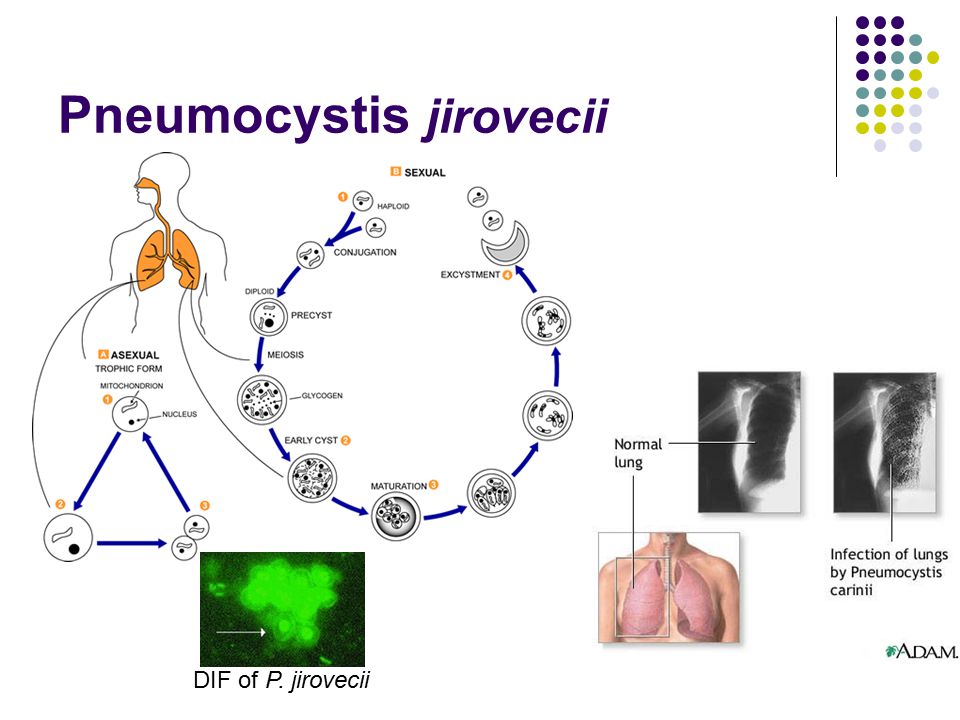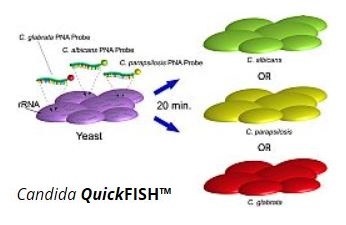Mycology
Pneumocystis jirovecii
The fungus P. jirovecii is the causative agent of interstitial pneumonia, which occurs particularly in infants, people with weakened immune systems and AIDS patients through airborne transmission. The fungus is ubiquitous and infects most people during childhood. In immunocompromised patients, the primary childhood infection may be reactivated or, more likely, a new infection takes place. In case of infection with P. jirovecii the diagnosis is made microscopically or by RT-PCR.

- Microscopic diagnostics
- Nucleic Acid Amplification Technique
Aspergillus fumigatus
Aspergillus moulds are the cause of aspergillosis. The most significant species found in humans are Aspergillus flavus and fumigatus. These fungi have a high allergenic potential and can cause allergic bronchopulmonary aspergillosis (ABPA) with asthmatic symptoms.
 Candida albicans
Candida albicans
The yeast Candida albicans is part of the normal skin flora and occurs on skin and mucous membranes. Candidiasis occurs when the immune system is weakened. Diagnosing candida is not easy, many of the symptoms are too general and therefore can easily be considered as symptoms of another disease.
- Microscopic diagnostics
Cryptococcus Neoformans
Cryptococcus neoformans is an encapsulated yeast and an obligate aerobe that can live in both plants and animals. It is often found in bird excrement. Cryptococcus neoformans is an encapsulated fungal organism and it can cause disease in apparently immunocompetent, as well as immunocompromised, hosts.
- ELISA
Coccidioides Immitis
C. immitis is a major causative agent of deep-seated mycoses. Though endemic in the southwestern United States and Mexico, increased travel to the endemic areas has also increased the incidence in nonendemic areas. Coccidioidomycosis presents a diagnostic challenge to the physician and laboratorian. Lesions produced by C. immitis may be difficult to distinguish from other fungal diseases, or from tuberculous lesions and neoplasms (benign and malignant). Symptoms are often unremarkable and can mimic various pneumonias, sarcoidosis, cancer and other maladies. Culturally and histologically the organisms can be difficult to demonstrate, even after repeated attempts. Frequently serology offers the only evidence available to form a preliminary diagnosis.
- ELISA

 Deutsch
Deutsch


